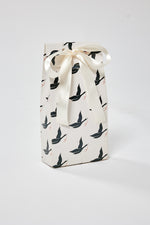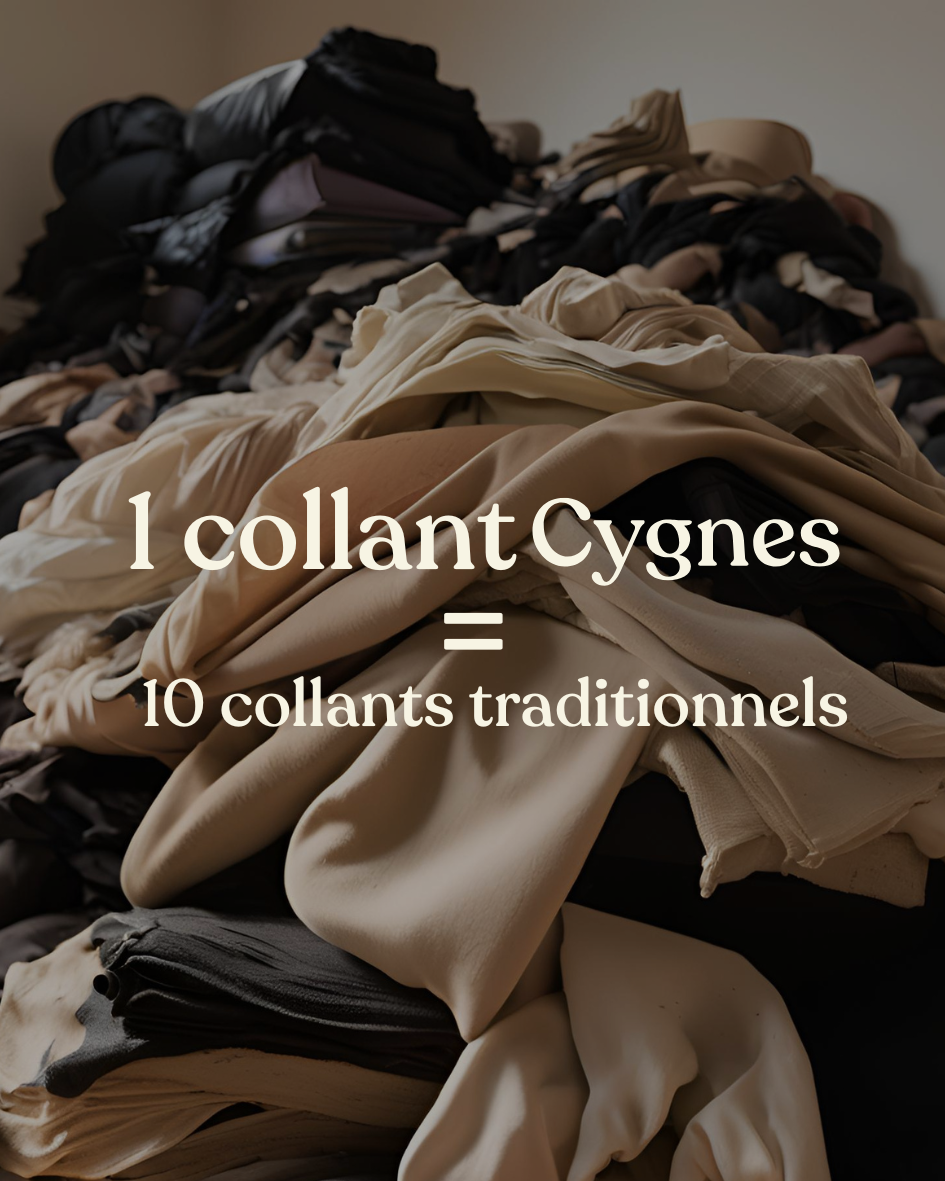Every year, millions of pairs of tights end up in the trash after only a few uses. However, runny tights don't necessarily mean discarded tights. By adopting responsible consumption practices, it's possible to extend their lifespan, give them a second chance , and even recycle them intelligently.
In honor of World Recycling Day, we wanted to offer you a focus article on recycling tights and how to consume more responsibly.
At Cygnes, we are committed to offering ultra-resistant tights to limit waste, while developing innovative solutions for a more positive impact.
1. Why recycle your tights?
Let's not kid ourselves, tights are often considered disposable accessories . One stitch and it's gone. However, behind this habit lies a real ecological issue.
At Cygnes, buying less but better is our mission. Our ultra-resistant tights last much longer and save up to 6,750 liters of water per piece.
Every year in France, 130 million pairs of tights are sold, but more than 100 tons end up in the trash. A pair of classic tights consumes 750 liters of water for an average lifespan of only five uses: an ecological aberration.
With our sustainable tights, we have already saved 400 million liters of water. By choosing them, you are investing in quality while preserving the planet.

By opting for more sustainable tights, repairing, recycling and choosing committed brands like Cygnes, we reduce this impact and adopt a more responsible approach to fashion.
2. Repair before throwing away
Before you say goodbye to your tights, have you thought about repairing them? A small hole or a loose stitch doesn't necessarily mean they're good for the trash!
If you notice any scale growing, immediately apply a drop of clear varnish to stop it from growing. This simple step can extend their lifespan and prevent further tearing.
For larger holes, a fine needle and a discreet thread are often enough to mend a stitch and give them a few more uses. This trick is especially useful for ultra-resistant tights like those from Cygnes, whose climbing-inspired thread makes them stronger and easier to repair.
Finally, for those who tend to damage their tights by wearing rings or snagging their nails, a good idea is to regularly moisturize your hands and legs. Well-nourished skin reduces friction and therefore the risk of pulled threads!
3. Give your tights a second life
If your tights are too worn out to be worn, why not reuse them? You'd be surprised how many different lives a simple pair of tights can have. Here's how you can recycle your tights .
In fashion, they can be transformed into practical accessories:
- A hair scrunchie (by the way, at Cygnes, we have developed scrunchies made from recycled tights).
- A stretchy and comfortable headband.
In the house, they become real allies:
- Lavender sachets to scent closets.
- Soft sponges for cleaning delicate surfaces.
- Dust filter for vacuum cleaner or faucet.
And for gardening enthusiasts, worn tights are perfect for:
- Stake plants without damaging them.
- Store and preserve garlic and onions away from moisture.
4. Where can you recycle your tights?
Recycling tights is still in development, but solutions are gradually emerging.
At Cygnes, we have set up La Concygnes , you can return your used pairs to us and you will receive a promo code in exchange. Our customers can return their used tights to us, and we will take care of recycling them to give them a new life. It is a concrete way to participate in more responsible consumption and limit waste. Every year Cygnes tries to do their annual collection to recover tights and give them a second life by making scrunchies made in France and recycled .
At the same time, some associations and textile collection points are starting to collect used tights to transform them into new materials:
- Insulating materials for buildings.
- Regenerated yarns that can be incorporated into new clothing.
Some brands are even experimenting with recycling nylon to create more sustainable textiles. These advances are paving the way for more environmentally friendly fashion.

5. Towards more sustainable tights with Swans
Rather than recycling at the end of their life, why not opt for ultra-resistant tights ? At Cygnes, we've redesigned them to last longer, reducing their environmental impact.
Our tights are made with a yarn from the climbing world, known for its strength and resistance to wear. The result? Tights that won't run at the slightest snag, that can withstand busy days, and that limit overconsumption.



